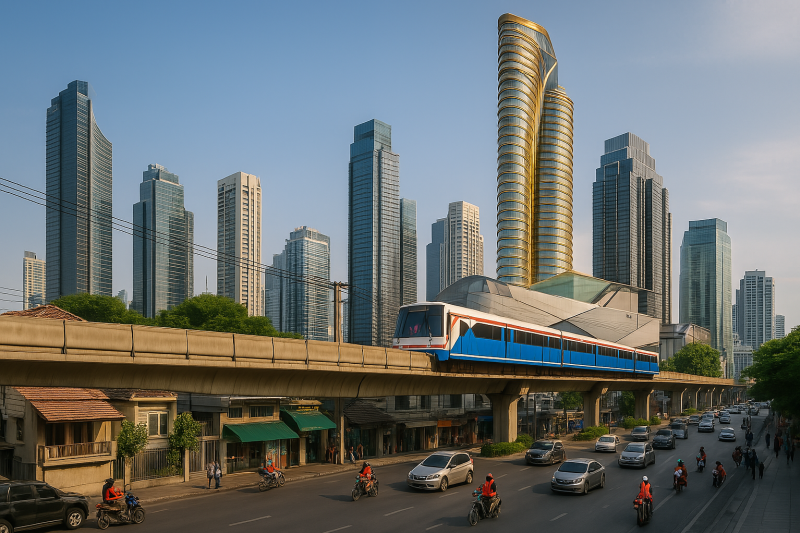WeChat ID :

Lately,
if you've been following the news
or are involved in the real estate industry,
you might have noticed the same trend.
.
Developers these days
are producing only ultra-high-end products.
Be it luxury all-penthouse condominiums
or extravagant mansions beyond imagination—
they've been popping up over the past year
with starting prices casually exceeding 100 million baht.
.
But when we look closer at the actual products,
they’re often not as luxurious
as those from previous generations.
Spaces are divided into clever layouts to appear "worth it,"
decorated with expensive materials
to justify the price tag.
.
Yet ultra-high-end products
are not purchased for their value.
There's simply no "value-for-money" logic
that can explain this segment.
.
The sales approach and storytelling
are also different from mass-market products.
They focus on extremely emotional appeal
and feeling confrontation—
designed to impress
and set themselves apart from typical developments.
These products are often viewed
as collectable assets,
not actual places to live in.
.
And it’s a shame to see
such precious land in the heart of the city
being used for residences that
ordinary people will never be able to afford.
.
It’s not that we blame developers—
we get it.
They’ve done the math.
With land costs reaching 2–3 million baht per square wah,
the selling price must be no less than 1 million baht per square meter.
.
And in order to achieve an average of 1 million per sq.m.,
they must develop these kinds of products—
easier to sell, faster to move,
and still profitable.
.
Being listed companies,
they need consistent revenue flow.
So they’re forced to continuously produce products.
They can't afford to wait for the economy to recover
and create products that more people can afford.
In the business world,
if they end the year without good financials,
their stock value drops.
.
But if we dig deeper,
this reflects a social issue.
Thailand’s inequality has reached the point where—
8 to 10 years ago,
a 10–20 million baht condo was considered ultra-luxurious.
Today, even those are becoming harder to sell.
.
So developers have opted to build
100-million-baht units
and 200-300 million-baht houses instead.
At least there’s still a small segment of buyers
who can afford them.
Because truth is—
our real estate market often relies on foreign absorption.
.
But the real question is:
what about the rest of the population?
.
Let’s take a look at other countries.
In prime economic locations—
CBDs or top-tier districts—
where land prices are similarly insane,
they still manage to offer small 30–40 sq.m. units
at compact prices that
give ordinary people a glimmer of hope.
.
But what about us?
Beautiful plots near mass transit
have now turned into exclusive zones
for the ultra-rich only.
.
So where are regular people supposed to live?
Move to the outskirts?
But jobs are still in the city.
What about quality of life?
What about transportation costs?
.
If the real estate market continues growing like this,
the inequality issue will only get worse.
.
Land prices in the city go up every year,
making affordable developments nearly impossible.
Developers still need to profit—
but that doesn’t mean there’s no way out.
.
Some countries use strategies like
developing mixed-use projects—
combining retail spaces and office zones
to help balance land cost weight
and allow for residential areas
targeted at various income levels.
.
Governments could implement policies
that encourage developers
to allocate some parts of their projects
for mid-range or affordable units—
in exchange for tax breaks or other incentives.
.
The state should also directly invest in
affordable housing
in central areas with good transit networks—
giving ordinary people a shot
at living in well-located housing.
.
What a city truly needs
isn’t just high-profit projects,
but a balance of living—
where people from all income brackets
can co-exist and access decent homes.
.
If we let things continue like this,
our cities will be filled with luxury malls,
designer brands,
but devoid of local life and human diversity.
.
In the end,
a society can only truly thrive
when everyone has a place—
when diversity is allowed to mix and mingle,
not when it’s reserved for a privileged few.
.
Join the discussion at
https://www.facebook.com/photo/?fbid=10165144669773696&set=a.10151674408178696